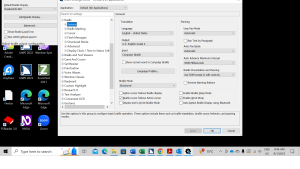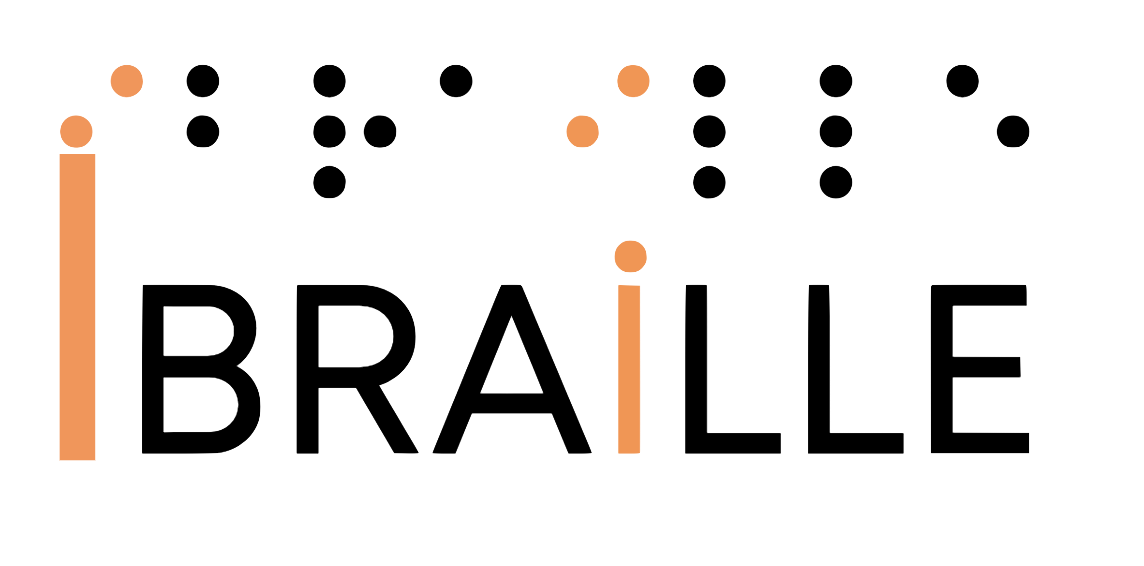Our Services
- Digital Accessibility
- Digital Accessibility Video
- Digital Accessibility Video Transcript
- Screenshot of JAWS screen reader
- Screenshot of NVDA Access Preferences dialog
- Desktop software testing
- Mobile app testing
- Pre-release software testing
- Website and web application testing
- Other digital accessibility testing services
- Accessibility consulting
- Accessibility strategy development
- Accessibility of physical devices and environments
- Assistive Technology services
- Please note
Digital Accessibility
Ensuring a great user experience when using a digital product or service should be more than providing useful features and functions. Accessibility must be a necessary part of an overall positive user experience. Without including accessibility in digital products and services, organizations not only leave out many user groups but may also run into operational and legal difficulties. This is where our Braille Accessibility and Usability Testing Services (BAUTS) can make a huge difference.
Digital Accessibility Video
Digital Accessibility Video Transcript
Haben speaking. Hello! There are companies out there that are claiming you can add one line of code to your website, and it’ll be fully accessible to blind and disabled people. Beware of companies claiming to use AI solutions to make websites accessible. AI is a tool, and right now it’s extremely limited in what it can do for accessibility.
I gave examples of auto-captioning in my last video. Auto-captioning turns my name, Haben Girma, into “happen grandma.” Imagine if you are a deaf person relying on the captioning and it’s auto-captioning. You miss out — key terms, important details, — if you’re only relying on AI based solutions like auto-captioning.
So it’s a myth out there that you can rely on AI for all your accessibility needs. AI is great in certain, very specific situations, but these companies out there — there are many of them, so it’s not just one — they’re claiming you can add one line of code and then your website will be accessible given their AI-based accessibility solutions. It’s extremely frustrating to me, and many of my blind friends, that millions of dollars are being poured into these companies.
One of these companies is called AccessiBe, and I went to their website. I’m blind, I’m a screenreader user. So I navigate websites using a screenreader, and on their own website I encountered barriers. If I’m finding barriers on their own website, how can I trust them to make other websites accessible? I don’t. I don’t trust them to make other websites accessible and I’m not the only one.
Over 400 accessibility experts and allies have signed a document describing the harms these services cause. Beware of companies claiming to use AI-based solutions to make websites accessible. Avoid these companies. Take full responsibility for accessibility. Disabled people are 1 billion people around the world. That’s a huge market. When you invest in accessibility, you get more customers, more revenue in the long run, and your product is better overall. Invest in real accessibility solutions.
Screenshot of JAWS screen reader

Screenshot of JAWS screen reader showing the settings for Braille. Image Credit: iBraille
Screenshot of NVDA Access Preferences dialog

Screenshot of NVDA Access Preferences dialog showing Braille settings. Image Credit: iBraille
Desktop software testing
Using different screen readers currently available, we carefully evaluate an app’s accessibility and usability when Braille is in use without other operational modes. First, we use existing automated accessibility testing tools, which often fail to generate a complete and accurate check, to obtain a broad accessibility diagnosis. Next, we manually and methodically perform every possible action the app permits, factoring in every possible use case involving Braille. Finally, we create a document providing detailed analysis and recommendations.
Mobile app testing
This service is similar to our desktop software Braille accessibility testing service. The main difference is that there is only one screen reader that is built into the mobile operating system. We want to help you ensure that your mobile app is accessible to everyone — because accessibility benefits you and everyone else.
Pre-release software testing
We recognize that software development is a long and complex process. Consequently, organizations may find that new software iterations frequently introduce new accessibility problems or worsen existing ones. This is especially true if the organization’s quality control measures do not include using experts who are not only highly literate in Braille but also access the product or service primarily or exclusively through Braille on a daily basis. This service will help you discover and fix regressions in Braille accessibility.
Website and web application testing
Website and Internet technologies are always evolving. As of 2023, there are approximately 200 million active websites. This number does not include the hundreds of millions of websites that are not being maintained. The accessibility and usability of your website not only draws visitor traffic, but you also protect yourself from accessibility-related litigation. That is why it is crucial to make your website and web app accessible to and usable by everyone. As our starting point, we check for conformity with W3C’s Web Content Accessibility Guidelines (WCAG) specifications.
Other digital accessibility testing services
Our digital accessibility testing is not limited to software and web content. We may be able to assist you in formulating an effective digital accessibility strategy. Some other digital accessibility testing services include but are not limited to the following:
- Electronic document accessibility;
- E-Readers; and
- Any other digital content or device that you want everyone to access.
Accessibility consulting
Our Braille Accessibility and Usability Consulting Service (BAUCS) is a separate but related category of services. BAUCS focuses on accessibility consulting areas summarized below.
Accessibility strategy development
Every organization’s situation is different. That is why this service is designed to help you maximize available resources in order to develop and implement an accessibility plan. We carefully consider your organization’s particular needs and goals to help you develop an accessibility strategy that incorporates Braille and tactile in the most efficient and effective way possible. This means having your own accessibility guidelines based on general principles but also reflecting your organization’s particular structure and mission.
Accessibility of physical devices and environments
Have you ever wondered how a person who relies on Braille and tactile can access any physical device utilizing an interactive touch screen or providing no tactile feedback? Or ever thought about how that same individual would be able to navigate safely within a physical environment? The Americans with Disabilities Act (ADA) requires goods, services, and facilities to be accessible to people with disabilities, among other requirements. We can help you determine how best to incorporate Braille and tactile into your products, services, and environments so that they can be made accessible to all users.
Assistive Technology services
We offer additional services that complement our core accessibility and usability testing and consulting offerings. These services are designed to help individuals and organizations in making products, services, and environments accessible to everyone.
One of our services includes needs assessment, where our team of experts provides highly individualized assessments to help identify assistive technology products and services that enable access to education, employment, and independent living. We provide customized recommendations to help individuals and organizations break down access barriers.
We also offer equipment installation support to individuals and organizations who need installation assistance. Our support professionals are continually upskilled in keeping up with the rapidly changing assistive technology landscape, and we maintain an extensive list of the latest assistive technology products. This allows us to efficiently install and troubleshoot them for you.
At iBraille, we understand that accessibility problems can only be addressed when people are able to effectively utilize any piece of equipment. This is why we also offer assistive technology training services. We leverage our deep knowledge of a wide array of assistive technology products to deliver highly customized trainings that ensure your investments provide great value.
Please note
- Our mobile app accessibility and usability testing service is currently limited to Apple’s iOS operating system. We are working to expand our service to include Google’s Android mobile operating system.
- At this time, we will only provide accessibility and usability testing for desktop apps developed for Microsoft’s Windows operating system.
- All our services, except for certain consulting services, are provided electronically in order to reduce overhead costs.
- Services that require us to physically assess the accessibility and usability of a product, service or environment are restricted to the San Francisco Bay Area region at this time.
